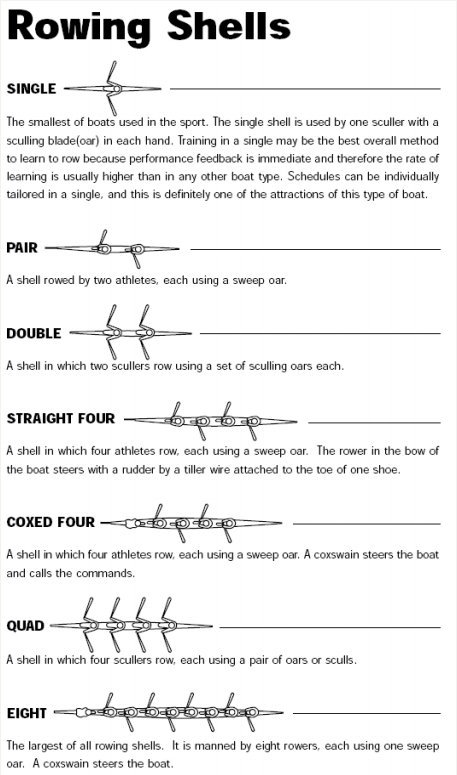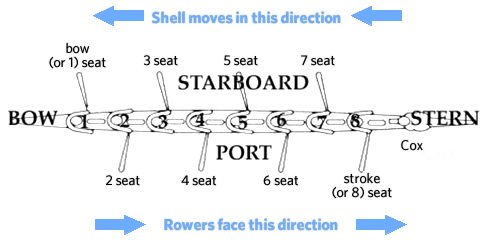Rowing, an ancient sport with a rich history, offers a plethora of boat types, terminology, and techniques. Whether you're a novice or a seasoned rower, it's essential to grasp the fundamentals of this sport to navigate the waters effectively. In this guide, we'll delve into various aspects of rowing, including boat types, directions, rower positions, and common terminology.
Boat Types
Rowing boats come in various configurations, each designed for specific purposes and crew sizes:
- Single: Designed for one rower with two oars (scull).
- Double: Equipped for two rowers, each with two oars (scull).
- Quad: Accommodates four rowers, each with two oars (scull).
- Pair: Suitable for two rowers, each with one oar (sweep).
- Straight Four: Features four rowers, each with one oar (sweep).
- Four With: Consists of four rowers, each with one oar, and a coxswain (sweep).
- Eight: Fits eight rowers, each with one oar, and a coxswain (sweep).
Directions in a Boat
Understanding boat directions is crucial for effective communication and navigation:
- Stern: The back end of the boat.
- Bow: The front end of the boat where the bow ball is located.
- Port: The left side of the boat from the coxswain’s view and the right side from the rower’s perspective.
- Starboard: The right side of the boat from the coxswain’s view and the left side from the rower’s perspective.
- Coxswain Positioning: The coxswain faces the direction the shell is moving, while rowers face the rear.
Rower Positions
Each seat in the boat is numbered according to its position from bow to stern. The bow seat is closest to the bow, while the rowing seat nearest to the stern is called "stroke." Rowers are often referred to by their seat numbers.
The Boat
Understanding the anatomy of the boat is essential for maintenance and safety:
- Hull: The main body of the boat, fragile and prone to damage.
- Board/Deck: Stern and bow decks for flotation in case of swamping or flipping.
- Seat: Position of the rower in the boat, equipped with wheels for movement.
- Tracks: Guides for seat wheels (slides).
- Foot Stretcher: Adjustable plate for attaching shoes.
- Rigger: Metal or composite arm holding the oar.
- Oarlock: U-shaped part securing the oar.
Oars
Oars play a vital role in rowing technique and propulsion:
- Blade: The part of the oar that enters the water.
- Handle: The grip portion of the oar.
- Sleeve: Plastic plate on the oar shaft.
- Collar: Plastic piece securing the oar in the oarlock.
Common Terminology
Understanding rowing terminology enhances communication and performance:
- Catch: The start of the rowing stroke where the oar blade enters the water.
- Drive: The phase of the stroke where the blade propels the boat.
- Finish: The conclusion of the stroke as the blade exits the water.
- Release: Raising the blade out of the water at the end of the stroke.
- Recovery: The phase where the rower returns to the catch position.
Coxswain Calls
The coxswain, responsible for steering and commands, plays a crucial role:
- Check It Down: Command to slow or stop the boat by dragging blades through the water.
- Hold Water: Command to keep the boat in place with squared blades.
- Let It Run: Command to glide through the water with blades off.
- Power 10: Command for rowers to exert maximum effort for a set number of strokes.
By understanding the nuances of rowing, from boat types to terminology, enthusiasts can enhance their experience on the water and achieve greater proficiency in this exhilarating sport. Whether you're embarking on your first rowing adventure or aiming for competitive success, a solid grasp of rowing fundamentals is the key to success.


